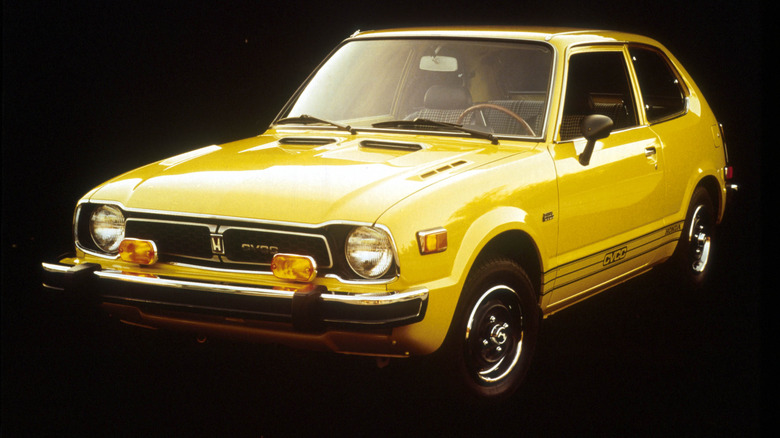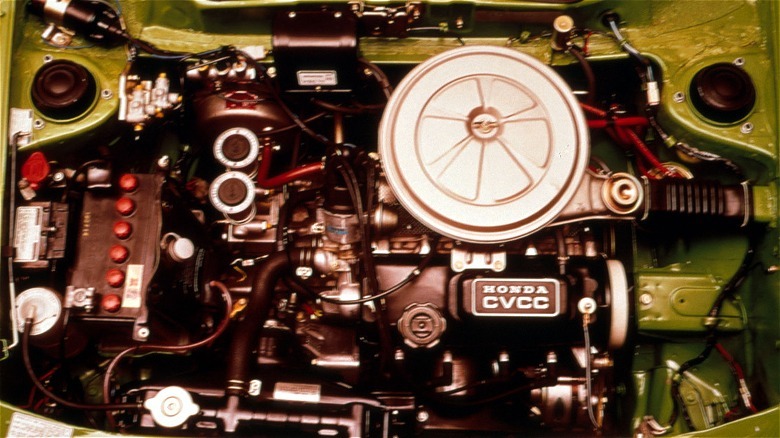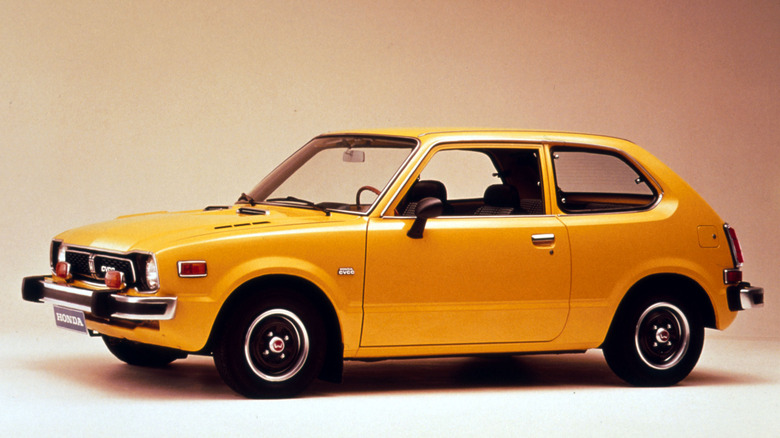What Made Honda's 1972 CVCC Engine Technology So Unique (For The Time)
The master engine-smiths at Honda have long been venerated for developing the now famous VTEC engines that featured variable valve timing. Long before it was cool to boast about VTEC "kicking in," Honda came up with another ground breaking engine technology that went by the much less catchy name of "CVCC."
CVCC stands for "Compound Vortex Controlled Combustion," and was developed out of necessity to comply with the increasingly restrictive emissions standards of the early 1970s like the Clean Air Act, according to Honda. In fact, in December of 1972, the CVCC was the first ever engine to pass the upcoming 1975 emissions standards set forth by the Environmental Protection Agency.
Funnily enough, Honda didn't even have a car to house the engine. According to Honda, testers from the United States federal government used a Nissan Sunny fitted with Honda's engine for all of its testing. It wasn't until 1973 that Honda was able to make a car that used the engine technology inherently. That car itself would alter the automotive world forever: it was none other than the Civic.
Honda's efficient engine
Why is the CVCC engine so special? And how exactly did it outdo the American competition in efficiency? The magic had to do with the engine's two combustion chambers that allowed for a leaner fuel burn that used less gas. In older engines, like those seen in American V8s and the like from the late 1960s and early 1970s, the fuel was shot into the combustion chamber where the spark plug ignited it — moving the piston and producing power.
In Honda's CVCC engine, the explosion occurred in a smaller pre-combustion chamber that contained the spark plugs and fuel jets. That pre-chamber then shot fire and fuel into the main combustion chamber that housed the piston and valves, using less fuel overall, while still producing enough power to keep the engine moving.
Initially, Honda's CVCC engine — now at home in the Civic — didn't even need a catalytic converter to remain clean to regulators. Briefly, it was able to use older leaded gasoline whereas new (at the time) American cars couldn't. Compared to big and inefficient engines from the early 1970s, the compact and efficient CVCC engine was a breath of fresh air. The regulators were happy with its pre-combustion chamber and lower emissions, and customers were happy that they could finally buy a car that wasn't the length of a city block.


